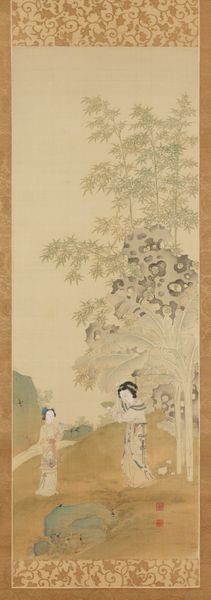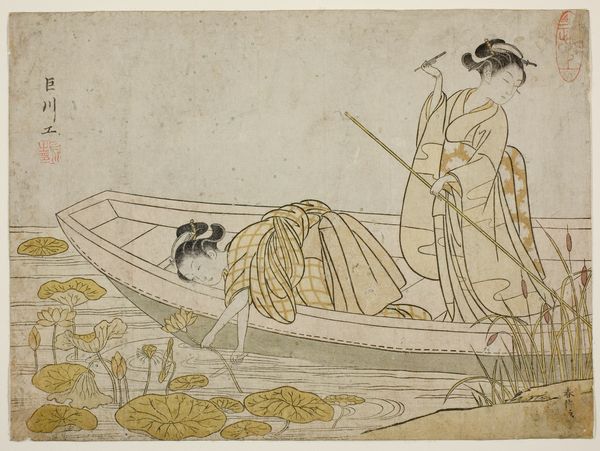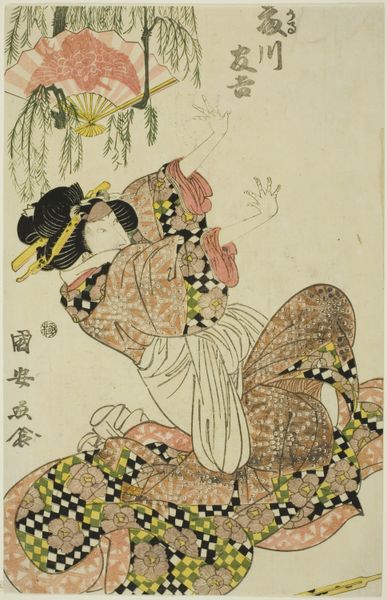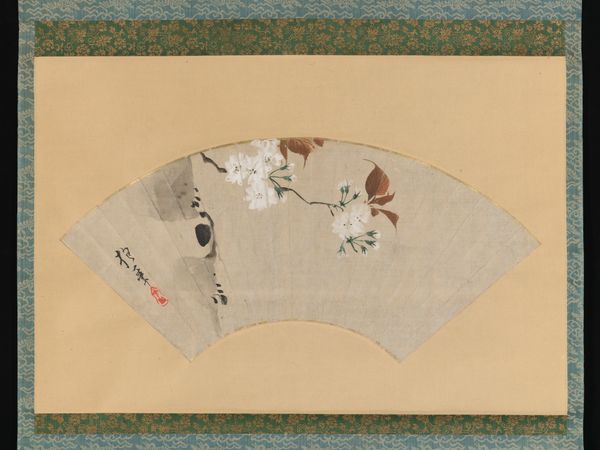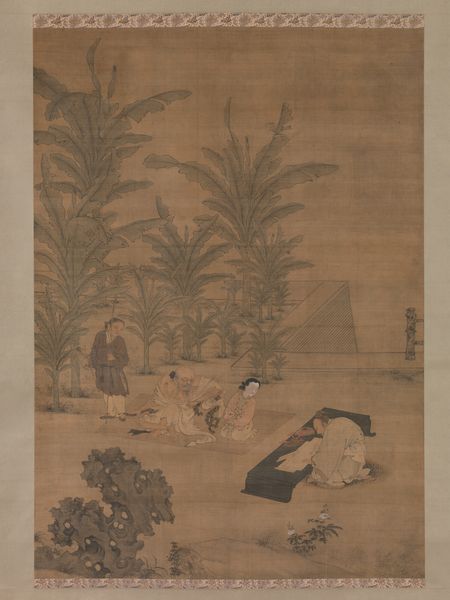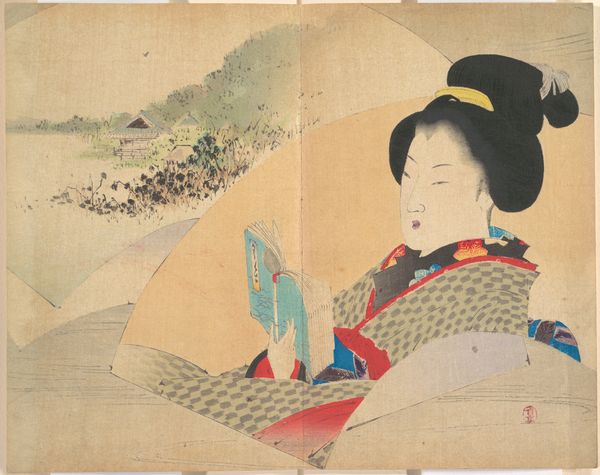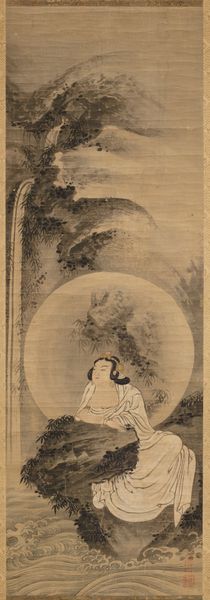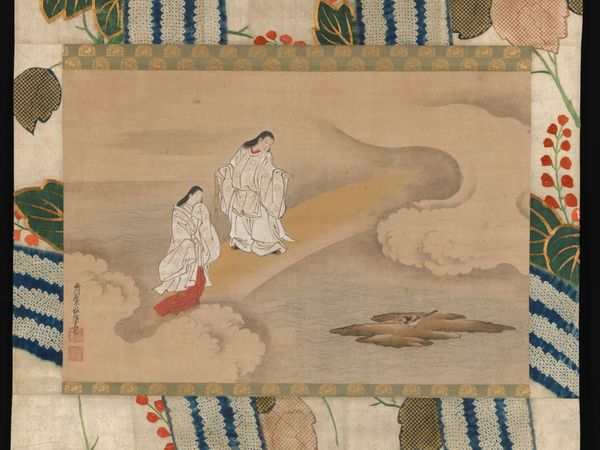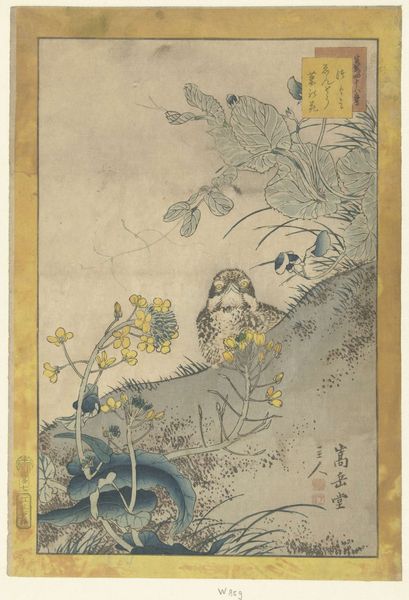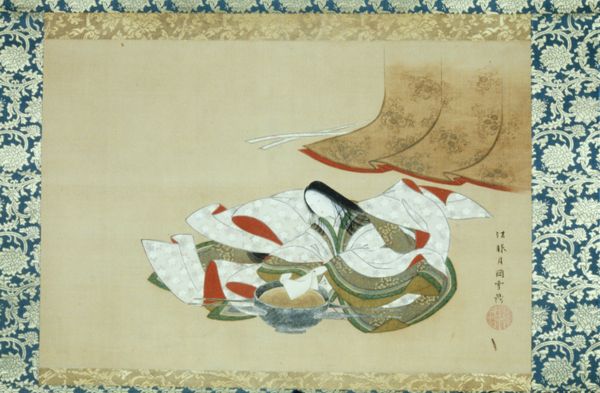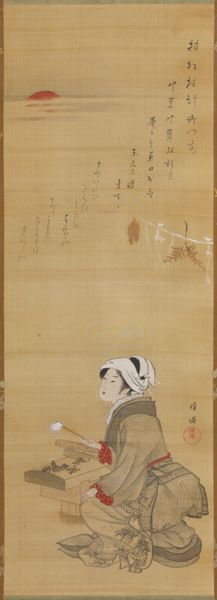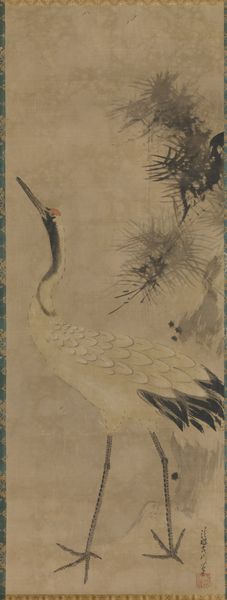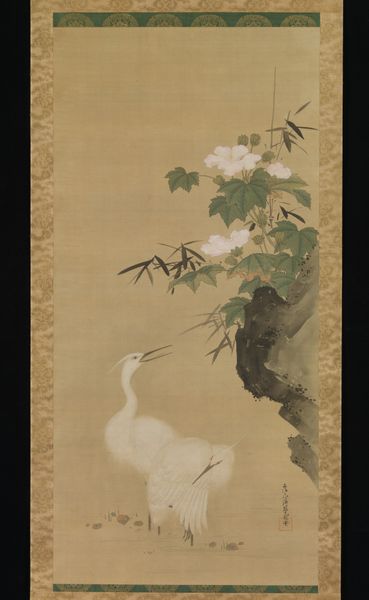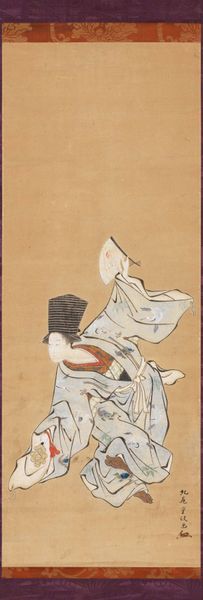
watercolor, hanging-scroll, ink
#
water colours
#
asian-art
#
landscape
#
oil painting
#
watercolor
#
hanging-scroll
#
ink
#
miniature
Dimensions: 62 x 35 1/2 in. (157.48 x 90.17 cm)
Copyright: Public Domain
This rendering of a swan and cygnets was anonymously painted on silk. Observe the swan, a symbol weighted with significance, often embodying purity and grace. Its representation here echoes through time, harking back to ancient mythologies where swans were associated with gods and goddesses, such as Leda and Zeus. But here, the swan preens and protects her young, representing maternal love. Consider how the swan has migrated across cultures: in some traditions, they signify fidelity and lifelong partnership, while in others, they are symbols of transformation. This image resonates with a collective memory, an unconscious echo of archetypal themes that touch upon our primal understanding of love, protection, and the cycles of life. The artist has captured an emotional aspect of the image as a powerful force engaging viewers on a deep, subconscious level. This image presents a continuous, non-linear progression of a symbol that resurfaces, evolves, and takes on new meanings in different historical contexts.
Comments
minneapolisinstituteofart almost 2 years ago
⋮
By the Song dynasty (960-1280), the Chinese had perfected a pictorial art form called huaniao (flower-and-bird painting). Chinese artists combined a highly descriptive approach to rendering plants and animals with themes that had psychological implications. Based on a composition by the 11th-century artist Wu Yuanyu, this carefully executed painting of a swan and cygnets forms a pair with another scroll of the same subject matter. The compositions express a psychological bond between parent and child that is emblematic of the traditional Confucian value of family unity. Large, paired paintings such as these were commonly hung in the reception halls of aristocratic homes as well as palaces during the early Ming period.
Join the conversation
Join millions of artists and users on Artera today and experience the ultimate creative platform.
